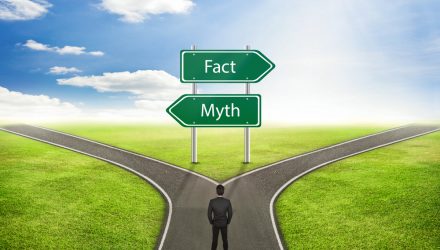With so much written about the debate between active versus passive over the years, it can sometimes be difficult to separate fact from fiction. In a white paper issued by T. Rowe Price, Josh Nelson, head of U.S. Equity, looks to provide clarity on some of the common myths and misconceptions surrounding the active versus passive debate.
Myth 1: Passive Investing Guarantees Market Return
One appeal of the passive approach is that it achieves returns in line with the index. The theory is that while you’ll never beat the market with passive, you’ll also never trail it by more than the strategy’s expenses. The gap between theory and practice can be wide.
Consider matching the weights of the different securities in the index. What happens when prices change the next day? When does rebalancing take place to keep the weights equally matched? What about when dividend payments are made? More is happening beneath the surface of passive strategies than most investors think.
Another appeal of passive investing is its generally low cost. However, investors who choose an investment purely on this basis must understand that, in doing so, they’re guaranteed to underperform the index year-over-year. While many active managers also underperform (at a higher cost), skilled active managers with abundant resources have shown that they can regularly beat comparable passive returns.
Myth 2: Active Strategies Fail to Consistently Add Value
There’s ample research suggesting that the average active manager fails to add value after fees consistently, but despite headlines declaring the death of active management, many active managers have the skill and rigor to consistently outperform the market.
When considering active management, investors should select a skilled active manager with extensive research capabilities and a proven track record of outperformance. They should also learn an active manager’s investment philosophy, process, and resources.
Myth 3: Passive Eliminates Active Decision Making
Another draw of passive investing is its low‑maintenance nature, but to suggest that there’s no active decision‑making involved is inaccurate. For example, companies are screened for quality to be considered for the S&P 1500 Composite Index. So, from the start, active quantitative decisions are being made to exclude part of the U.S. equity market.
Then there’s the decision of which index is best to track and what biases and assumptions are baked into that index. Digging into the details, passive investing always involves some active decision‑making.
Myth 4: Passive Limits Risk Exposure
Passive investors argue that, unlike active management, there’s no risk of significant market underperformance. Yet this perspective fails to acknowledge the risk mitigation flexibility available to active managers.
In an uncertain market environment where appealing investment opportunities are few and far between, an active manager can elect not to invest in the market and instead simply allocate money to cash. Similarly, an active manager doesn’t have to stay invested in all market areas.
If a particular sector is underperforming or appears to be overvalued, active investors can limit their potential risk by underweighting or avoiding these areas altogether. Passive investors, meanwhile, have no option but to remain fully invested across the entire market.
An active manager has complete control over the level of risk exposure and at exactly which point to move underweight or exit an investment altogether.
Myth 5: Active Management’s Future Is Limited
Some advocates of passive investing argue that the significant investor inflows into passive strategies suggest that active management’s days are numbered. Nelson finds this unlikely since the stock market becomes more inefficient as passive assets under management grow. The more inefficient the market becomes, the more opportunities there are for skilled active managers to outperform.
Nelson concluded that, while there are valid arguments on both sides of the active versus passive debate, none of them should be taken at face value. In fact, many common arguments fall apart when held up under closer scrutiny.
“While the appeal of inexpensive passive market exposure is understandable, investors should not ignore skilled active managers and their ability to exploit market inefficiencies and mitigate risk,” he wrote before adding: “active management is vital to the overall efficiency of financial markets.”
T. Rowe Price offers a suite of actively managed ETFs. T. Rowe Price has been in the investing business for over 80 years, conducting field research firsthand with companies, utilizing risk management, and employing a team of experienced portfolio managers carrying an average of 22 years of experience.
For more news, information, and analysis, visit the Active ETF Channel.








